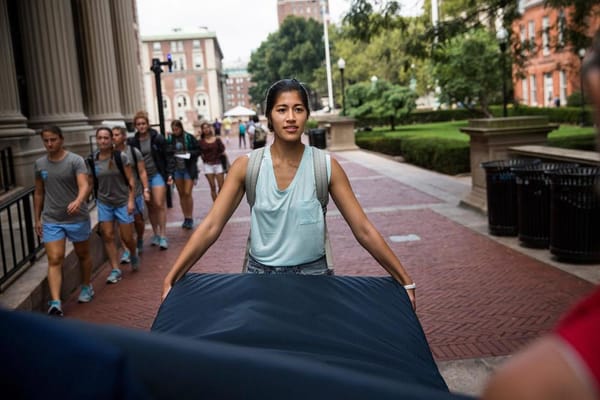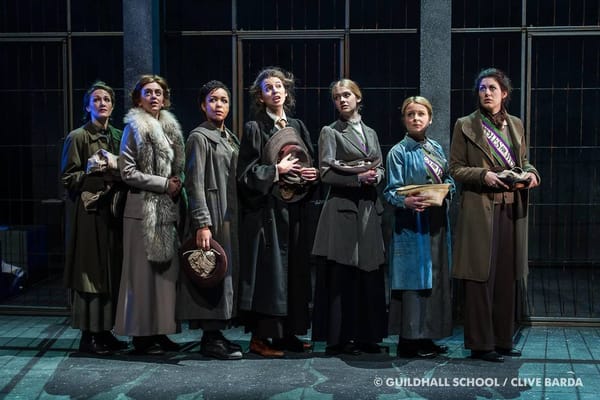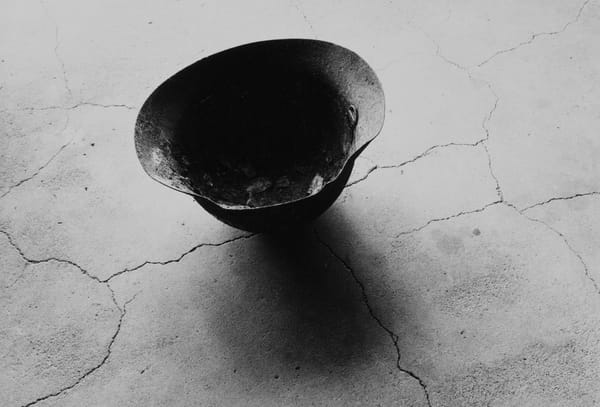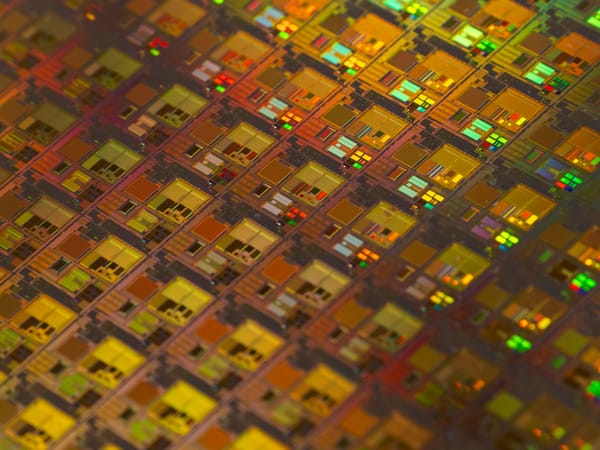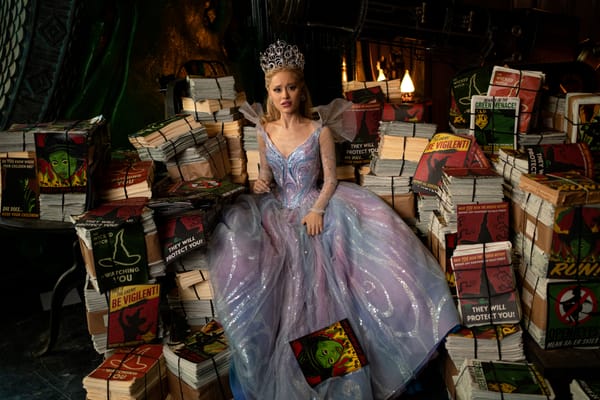At the Frontiers of Art, Performance, and Protest
Indira Mallik asks: where do revolution and artistic expression collide?
In recent years, the idea of revolution and protests has barely left the public consciousness, or our TV screens. From the Arab Spring across Syria, Libya and Egypt to the recent protests in Ferguson and New York against police brutality, protest has spread to all corners of the world.
The_ Disobedient Objects _exhibition currently at the V&A is a collection of badges, banners and placards that have played an integral part in protests across the world in the 20th century. The Porter Gallery has been injected with a touch of the revolutionary spirit, with seven metre high carbon fibre gallery doors emulate barricades made iconic by the French Revolution. Colourful banners, the largest of which declares “Capitalism is Crisis” in vivid peacock hues, give the air of a renegade camp; screens throughout the gallery project show scenes from demonstrations and protests, the chants clashing and harmonising to create a space unlike any other.
So what exactly is meant by ‘objects of disobedience’? The consensus is that they are items that have joined a movement together, allowing people from all walk to life to connect with causes beyond their own experience. But the exhibition is keen to point out that there is no ‘protest aesthetic’. The tokens that become iconic of a particular cause are determined by the context of the communities in which they are formed. Folk art or a particular phrase can be translated into a brand and circulated with technology. This is something we are seeing more and more of, recently #Icantbreathe went viral on Twitter as people all around the world took to the internet to voice their dismay at a grand jury failing to indict the police officer who was filmed putting Eric Garner in an illegal chokehold in New York earlier this year; “I can’t breathe” is repeated by Garner 11 times as the officer tries to restrain him, before harrowingly falling silent.
In the critical essay _The Frontiers of Art and Propaganda _George Orwell writes “you cannot take a purely aesthetic interest in a disease you are dying from; you cannot feel dispassionately about a man who is about to cut your throat”. Orwell writes about the death of pure aestheticism, the end of creating art for art’s sake. There have been numerous examples of art that disguise a political agenda. The question that gripped me whilst walking through Disobedient Objects:can the objects of propaganda ever be Art?
It all comes down to how we define art. For me, there must be some aesthetic element; all pieces of iconic art have the power to command the viewer’s attention and remain in the viewer’s mind. The power of propaganda lies in how quickly the idea spreads and is taken up, and having a strong symbol that binds protesters together is an important part of achieving this. One of the most poignant example is that of the pink triangle that formed ACT UP’s ‘Silence=Death’ campaign, which aimed to fight homophobia and inaction during the AIDS crisis in the 1980s; they inverted the symbol used in Nazi concentration camps to mark out gay men as a call to arms.
Images often lead the vanguard of political protests. Protesters opposing the expansion of Heathrow Airport used shields portraying faces of villagers across the world in places such as Bangladesh, seeking to draw attention to the human costs of climate change. In 2011, as Italy faced education budget cuts, students took to the streets carrying huge cardboard and Plexiglas versions of classic book covers used as shields to push back against the police batons and charges. In 2011 the London Book Bloc campaign released a statement saying “when the police baton us… we will see not only police violence against individuals but the state’s violence against free thought, expression and learning… books are our tools, we teach with them, we learn with them, we create with them, and sometimes we must fight with them.”
It is exactly this sort of passion that elevates protest emblems into a type of art. Increasingly in art what matters is the concept – Banksy in particular is infamous for blending strong political ideals with his street art. The blurring of the boundaries between art and propaganda has already started to happen at the highest echelons of art.
One of the leaders of this movement are a group of anonymous American female artists who call themselves the Guerrilla Girls . Branding themselves “the conscience of the art world” they have been exposing sexual and racial discrimination in the art world since their inception in 1984. The group’s members wear gorilla masks in public to protect their identities and subvert the objectification of female artists that still takes place in the art world. One of their most famous pieces, now on exhibition at the Tate, depicts a Rokeby Venus-esque nude wearing a gorilla mask alongside the statement “Do women have to be naked to get into the Met. Museum? – less than 5% of the artists in the modern arts section are women, but 85% of the nudes are female”, protesting the lack of equal representation.
Such a bare political statement being exhibited as art in one of the highest regarded galleries in the world echoes Bertolt Brecht: “art is not a mirror to reflect the world, rather it is a hammer to shape it”. Art is about an enduring concept, and more importantly, a passion that transcends the artist and infects the viewer. There is no more immediate and powerful way to try and capture this sentiment, to try to shape the world, than protest.
The image of crowds marching and often chanting in unison can seem like performance art on an epic scale. But to lump the two in the same category would be dishonest. True protest, the act of going back onto the streets despite risk to life and liberty, carries with it dangers that art rarely ever does. Even as the ideas of art and protest intertwine, it would be wrong to class protest entirely as art.
It is tempting to try to beautify protest; it is easy for us to regard the spirit of revolution as something inherently romantic, to glamorise the overthrow of despotic regimes by civilians. It is this need to create such a poetic theme that plagued the broadcast of the Arab Spring by mainstream media. Catalina Ferro’s Manifesto puts it better than I ever could:
“I know what the price of smashing the system really is, my people already tried that./The price of uprise is paid in blood/And not Harvard blood…./It is easy to say “revolution” from the comfort of a New England library./It is easy to offer flesh to the cause/When it is not yours to give.”
Disobedient Objects is on at the V&A until 1st February 2015. Entrance is free.


